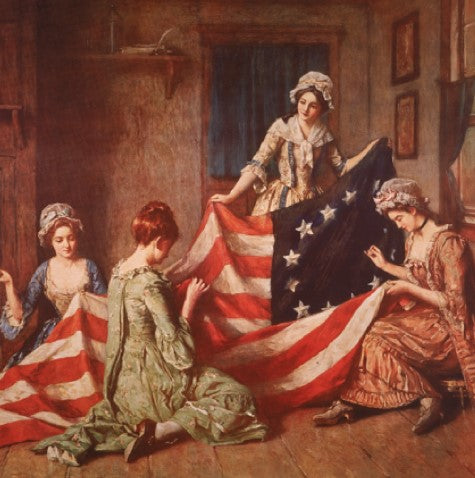
History of the Betsy Ross Flag
The Betsy Ross Flag is a symbol of American patriotism and pride, featuring 13 white stars arranged in a circle on a blue field, and 13 red and white stripes. The flag is believed to have been designed by Betsy Ross, a seamstress and upholsterer from Philadelphia, in 1776. The flag is also known as the Stars and Stripes or the Old Glory, and it has a rich history that is closely intertwined with the birth of the United States.
The story of the Betsy Ross Flag begins in the summer of 1776, when a committee of representatives from the 13 colonies, including George Washington, Robert Morris, and George Ross, visited Betsy Ross in her upholstery shop. The committee presented her with a sketch of a flag featuring 13 red and white stripes and 13 white stars on a blue field. According to legend, Betsy Ross suggested some changes to the design, such as making the stars five-pointed instead of six-pointed, and arranging them in a circle to represent the unity of the colonies.
While there is no concrete evidence to support the claim that Betsy Ross designed the first American flag, many historians believe that she did play a role in its creation. In fact, Betsy Ross's grandson, William J. Canby, presented a paper to the Historical Society of Pennsylvania in 1870, claiming that his grandmother had sewn the first American flag based on a design she received from a committee of the Continental Congress.
The Betsy Ross Flag gained popularity during the American Revolution, and it became an official symbol of the United States on June 14, 1777, when the Continental Congress passed a resolution that stated: "Resolved, that the flag of the thirteen United States be thirteen stripes, alternate red and white; that the union be thirteen stars, white in a blue field, representing a new constellation." The resolution did not specify the arrangement of the stars, but the circular pattern of the Betsy Ross Flag became the most popular.
The Betsy Ross Flag continued to be used as the official flag of the United States until 1795, when two additional states, Vermont and Kentucky, were admitted to the Union. The flag was updated to include two more stars and two more stripes, but it soon became apparent that adding a stripe for every new state would make the flag too cumbersome. In 1818, Congress passed a law that fixed the number of stripes at 13 and stipulated that a new star be added for every state admitted to the Union.
Despite its historical significance, the Betsy Ross Flag has become a controversial symbol in recent years. Some people view it as a symbol of American unity and patriotism, while others see it as a symbol of racism and oppression, due to its association with the era of slavery and colonialism. In 2020, the National Football League banned the use of the Betsy Ross Flag on its merchandise, citing concerns about its connection to white supremacy and hate groups.
In conclusion, the Betsy Ross Flag is an important symbol of American history and patriotism. While its origins are shrouded in myth and legend, there is no doubt that it played a significant role in the birth of the United States. Whether it is viewed as a unifying symbol or a divisive one, the Betsy Ross Flag remains a powerful reminder of the ideals and values that have shaped the American nation.

